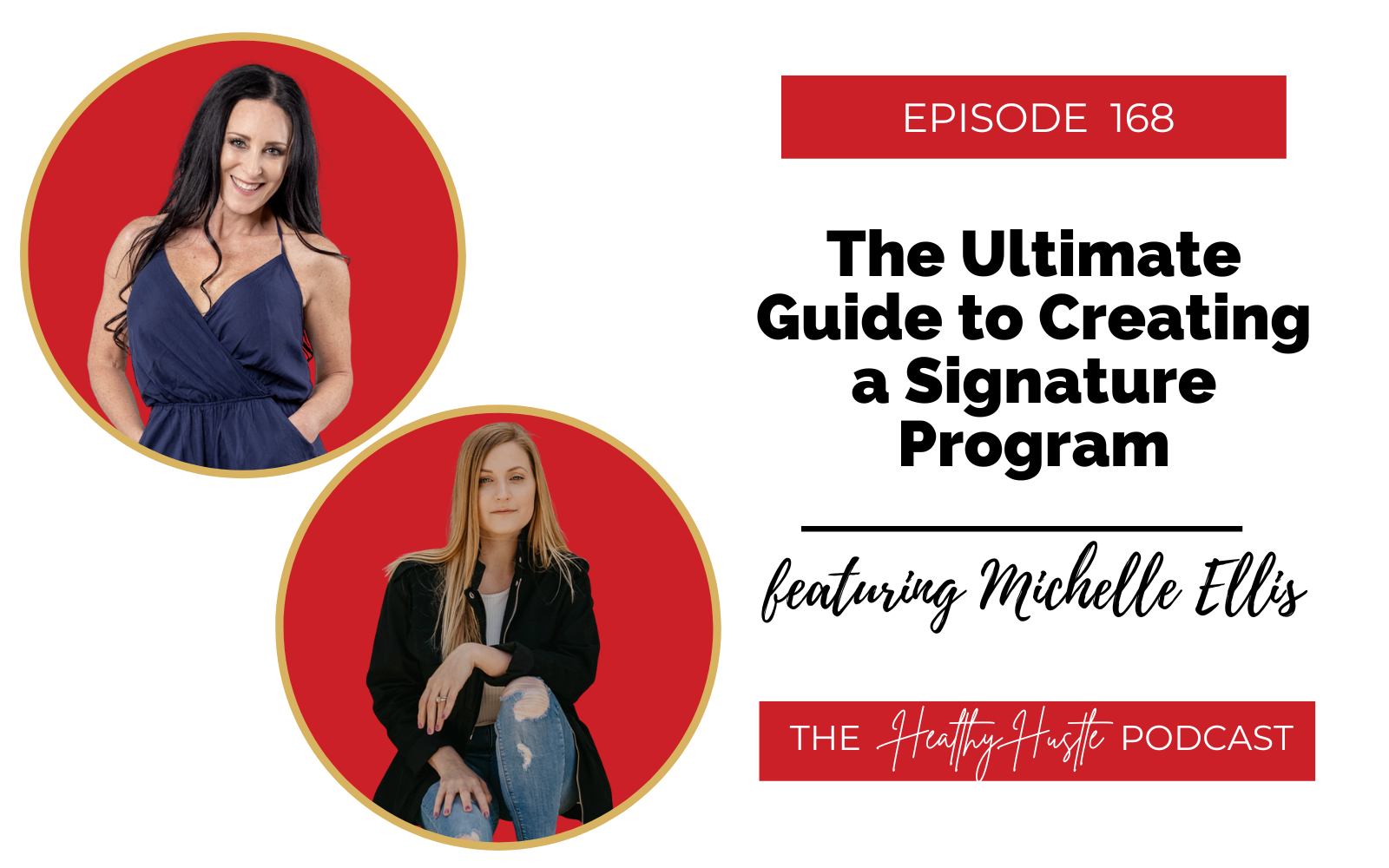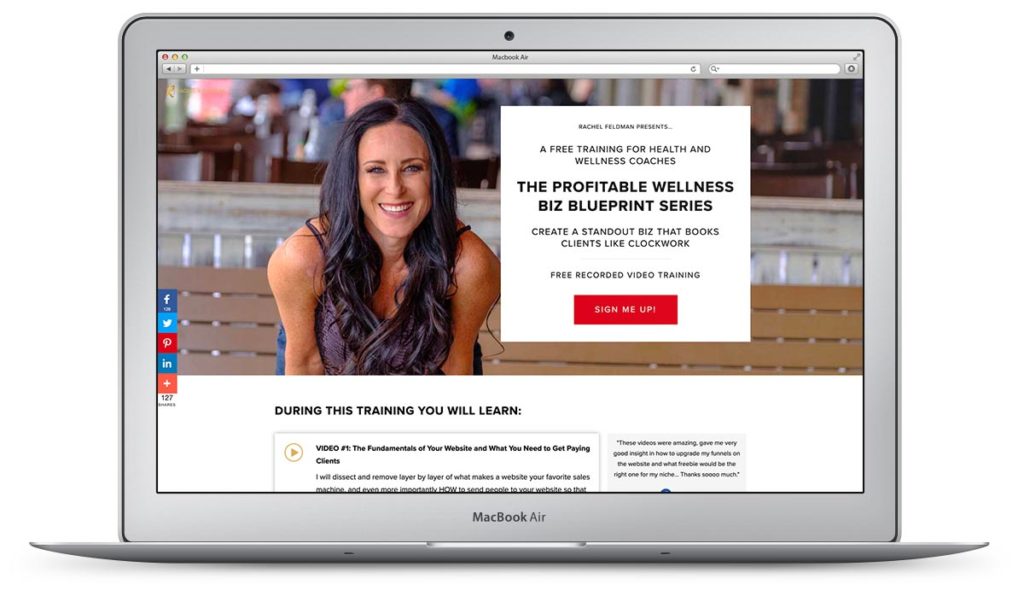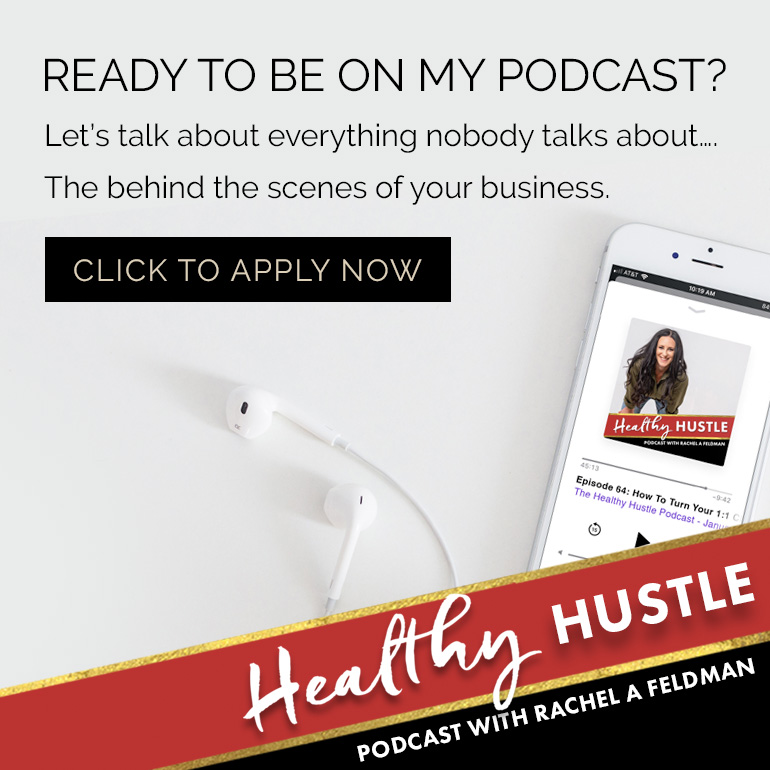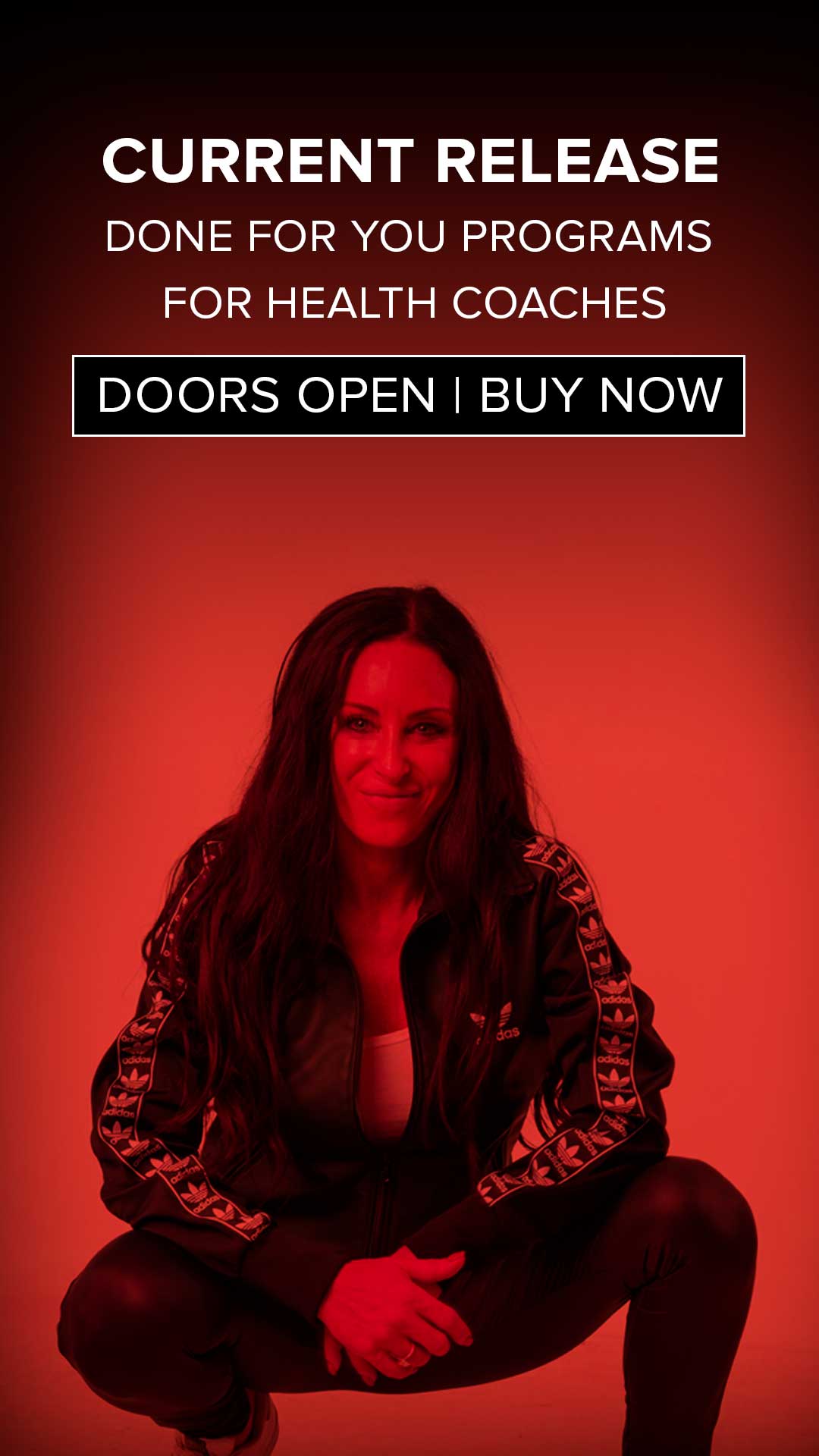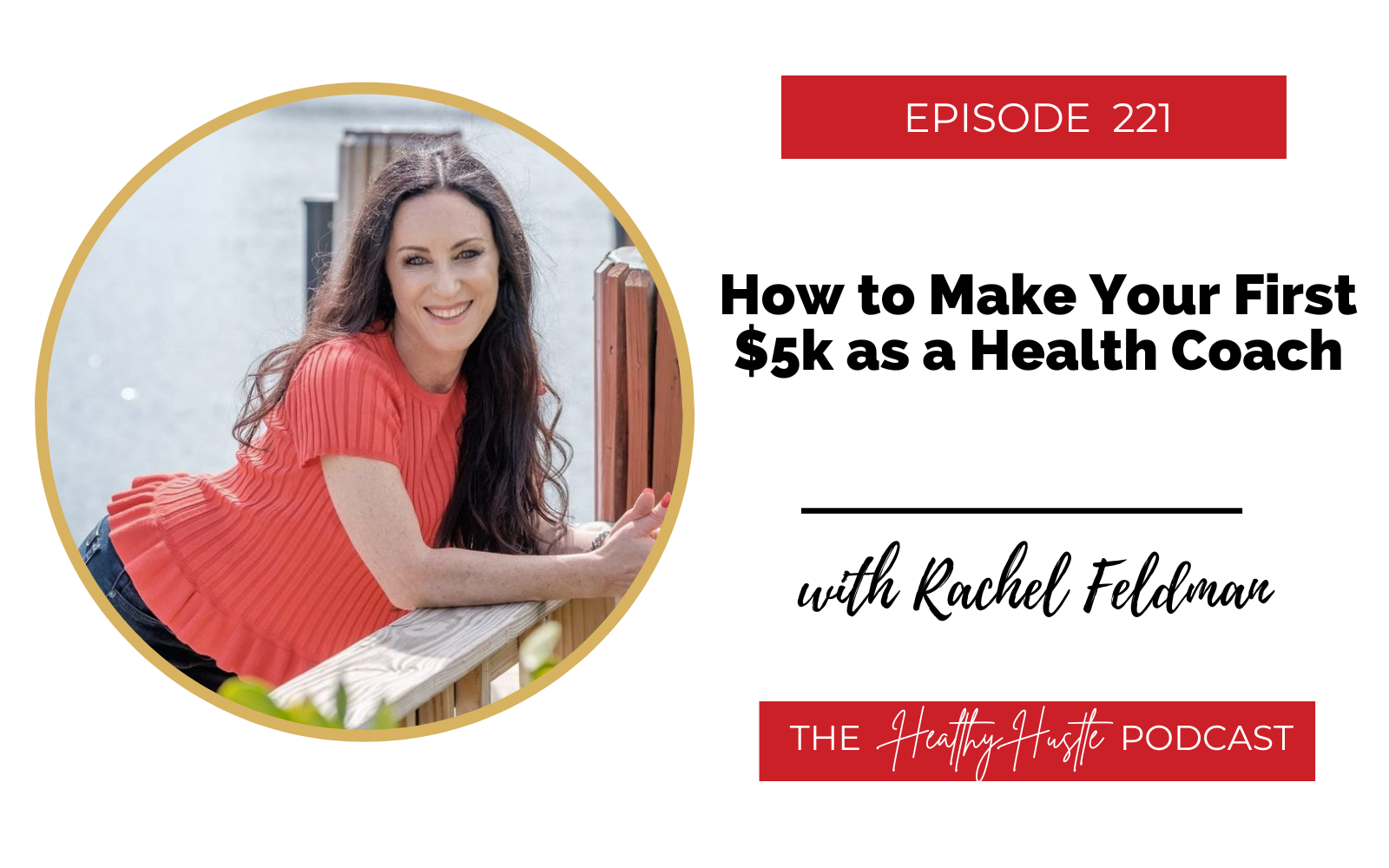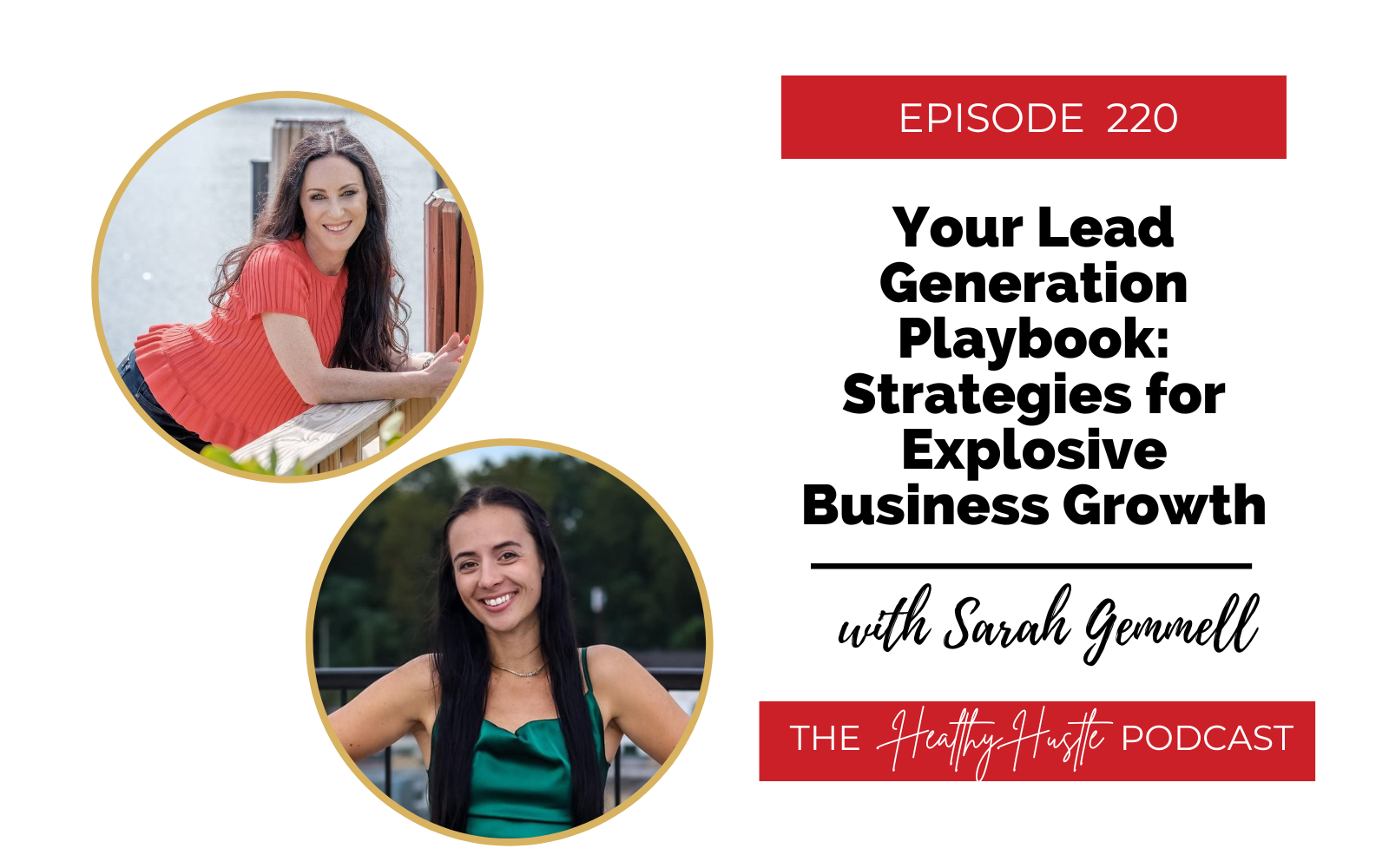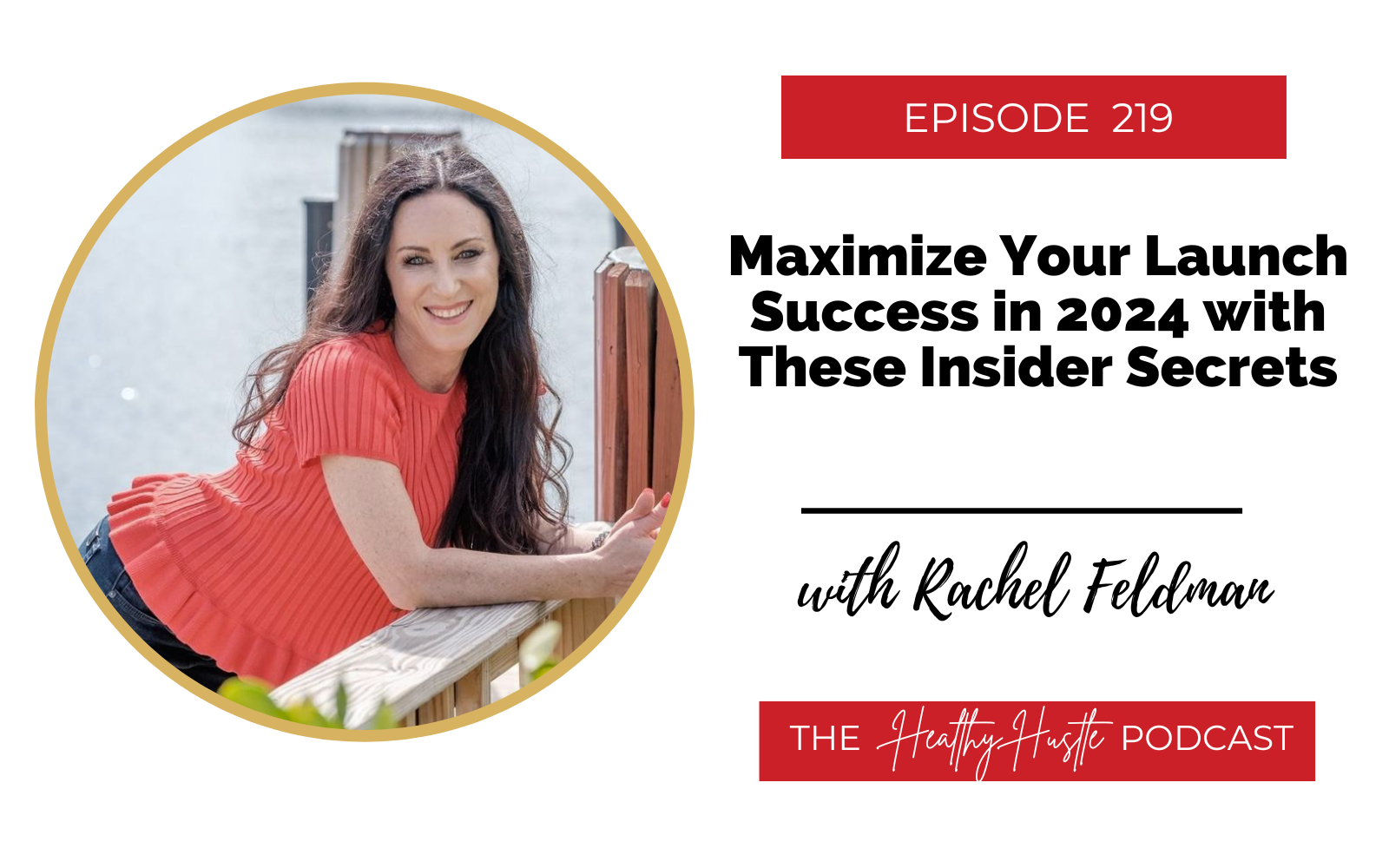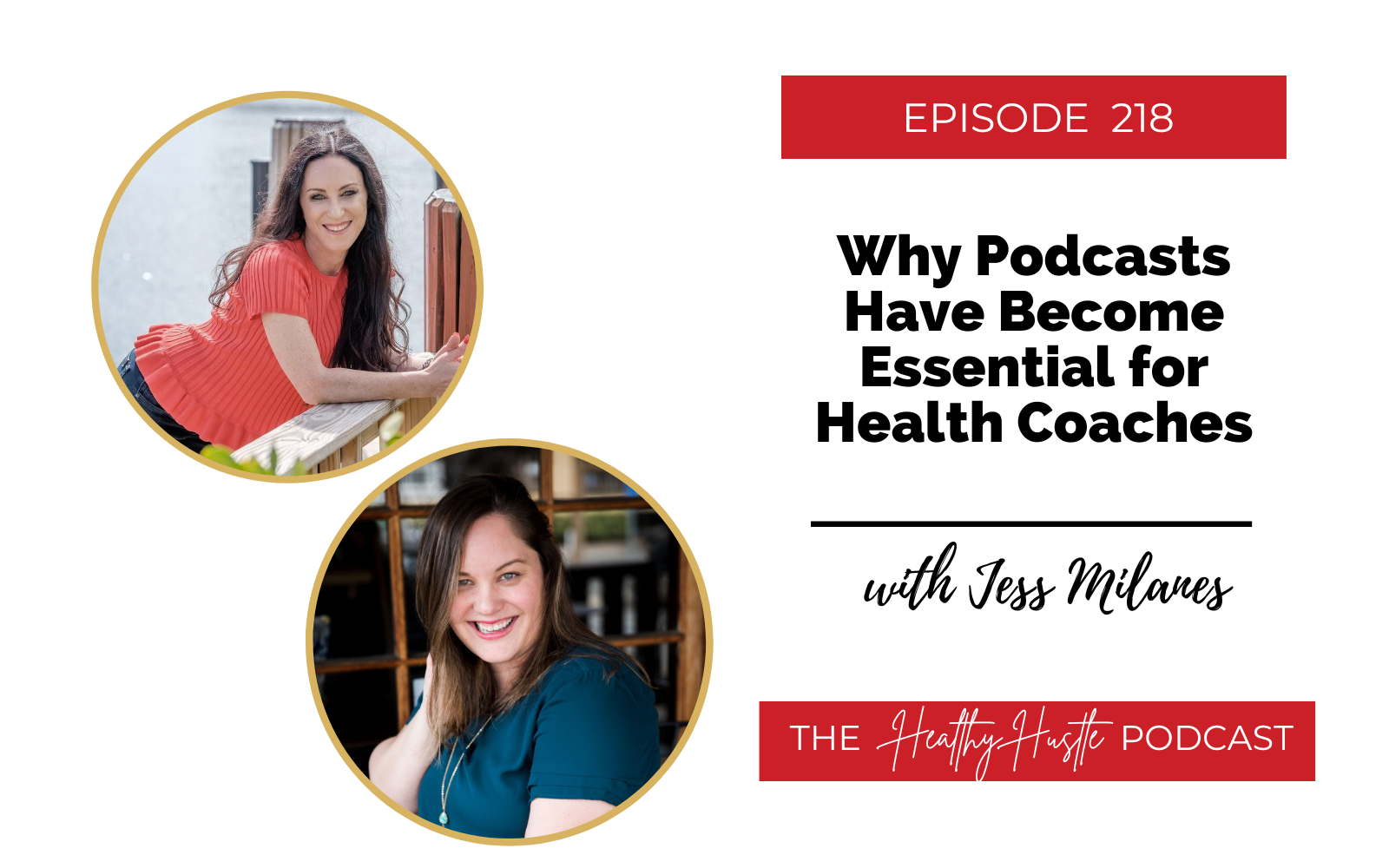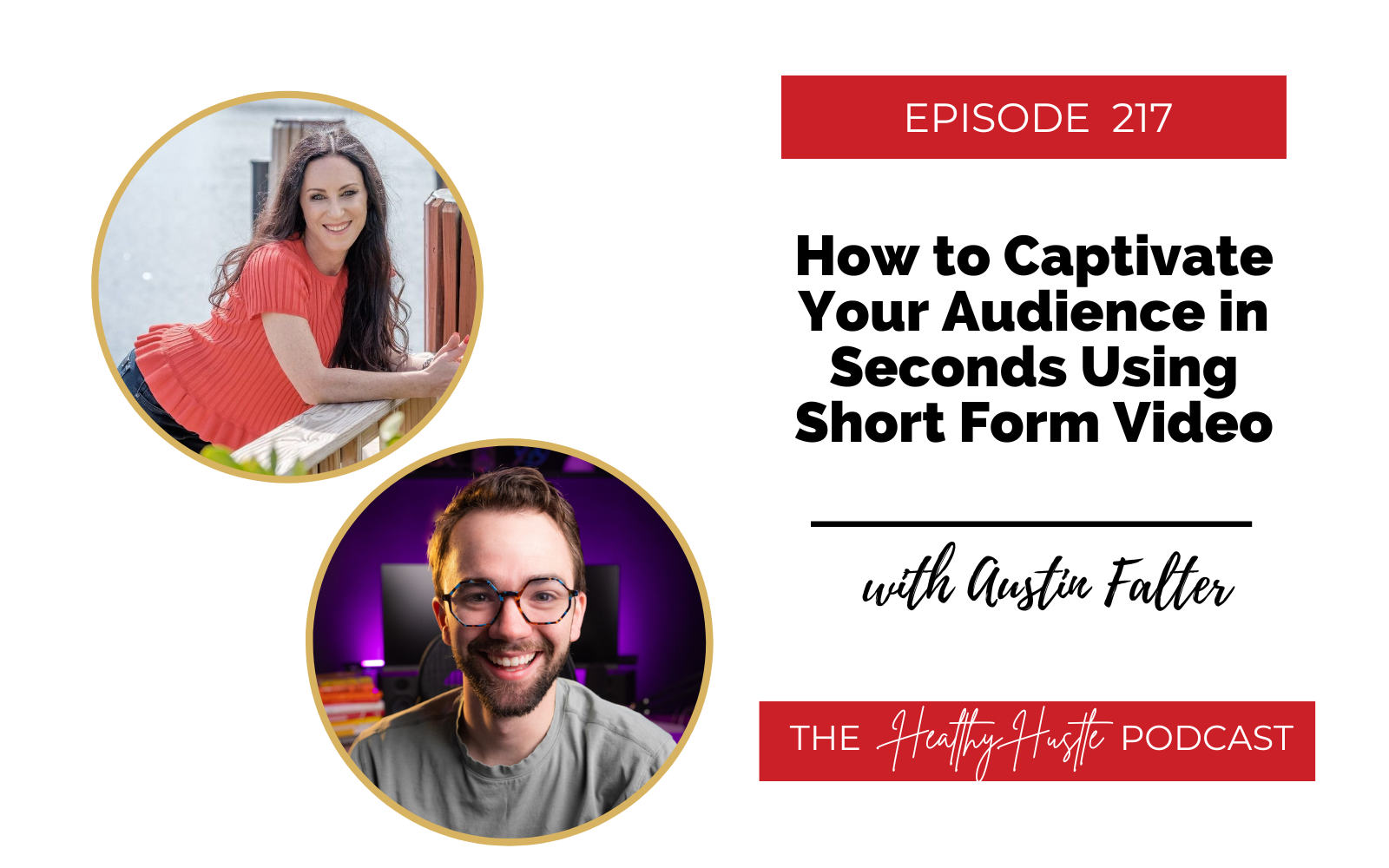Signature offers or signature programs are a staple for most health coaching businesses – or any business for that matter. Over the years, I’ve had coaches come to me needing help in creating their signature offer, and I get it! In the beginning of my business, I spent so many hours creating my signature offer because so much goes into it.
Not only did we create a done-for-you signature program template, but we’re going to break down exactly how to create a signature offer in today’s episode! Because if you want your health coaching to succeed, your signature program needs to be dialed in.
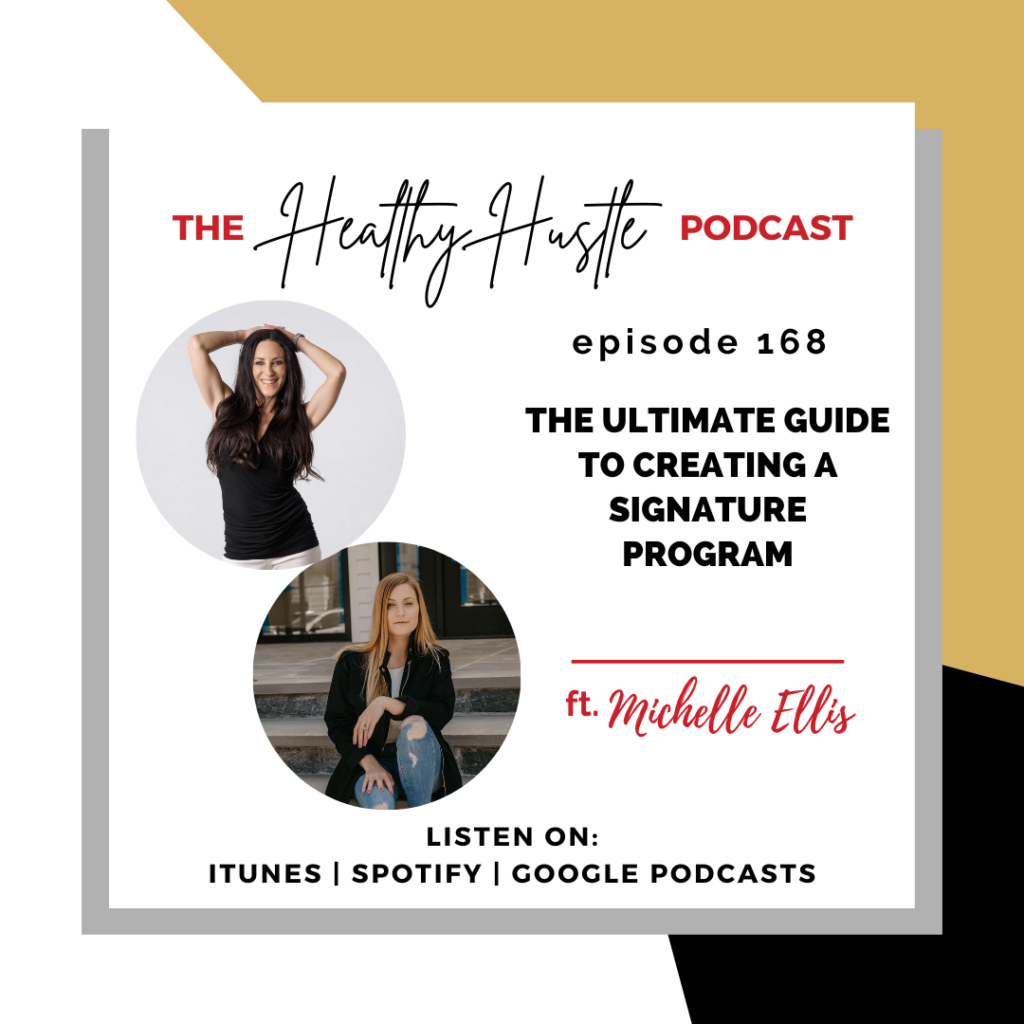
Michelle is back on the Healthy Hustle Podcast to talk with me about this key topic. We are diving into all things signature programs including what they are, the steps needed to create your signature coaching program, how to find the right length for yours, deciding how to deliver it, and why your messaging is crucial to enrolling ideal clients into your signature offer.
Connect with Michelle:
Michelle’s website: https://michelleellisco.showit.site/#/
Michelle’s Instagram: https://www.instagram.com/theorganiccopywriter/
Rachel: Hey guys, I’m so excited because we are diving into signature programs and how to create your signature coaching program. I can’t tell you how much time I spent in the beginning stages of my business creating that signature program. It was about 50 hours between creating recipes, shopping for recipes, testing recipes, writing the content for the program, and making sure I had a program that I could use to onboard my clients.
It was something that really was a game changer for me before I was trying to convert clients to just my coaching, and I realized people needed something tangible. That’s why today we are diving into how to create your signature offer.
The Steps You Need To Take To Create Your Signature Offer
Alright, Michelle, let’s talk about this. I’ve asked you to come back because I wanted your input on this amazing topic. What are the steps that we have to take to create our signature offer?
Michelle: Before we even begin, remember that you really need to know your offer, your audience, and your why. What do you want to be known for? What problems do you solve? What is your client actually looking to achieve and their health goals? Get really clear on the outcome of this program. What could be step one? Let’s say a coach comes in and they’re struggling, saying, Oh, my God, I’ve downloaded every free template on the internet. What do I do now?
The biggest thing is knowing what you are going to specialize in. Who is your niche? When you know that, you’ll know your ideal client. What are their problems? What are the symptoms that they’re going through? What are you looking to solve for them? What steps do they need to take them from A to Z?
That’ll also help with the length of the program. What do they actually need? If someone is trying to lose 10 pounds, the program doesn’t need as long as someone who’s trying to lose 30 pounds. So knowing the length of the program and knowing what the problem is that end result so hey can have a big win at the end of the program and be able to give you testimonials.
Which is why you really need to know what the topic of your program is and what is it going to cover? Maybe it’s going to cover a couple of things depending on how long it is. Maybe one week is talking about sleep and one week is talking about hydration or clean eating or something like that. Once you know the problem and what they’re doing right now and why their body is a mess, then you’ll be able to go in and holistically fix that step by step and lay it out and make your template.
Rachel: So a lot of you may think about what modules you want to actually lay out when we create the done-for-you programs, which are plug-and-play programs. They don’t come in templates, they come with full content written.
We sit there and we decide, what is the goal of this program? Who is this going to serve? Who is this program right for? Who is this program not right for? Then we take a template, and we put all of the headlines so that we know the topics that are included in that program, we put in a Google Drive, and then we get one of our writers to start writing.
If that’s the case, if you’re going to write your program, you want to definitely outline your program. You can take sticky notes and put them on the door and start to outline your program. You could do this on a Google Doc. But you want to know what is the skeleton of the program? So then you can start filling the holes with content. What would you say is the most important when it’s figuring out the time length of the program?
How To Figure Out The Length Of Your Program
Michell: Yeah, really looking at what does your ideal client need in their situation? For example, if someone’s coming in and they just need to have a first program before they go on to something else, maybe they just want to shed a little bloat or a couple of inches –then it might be an elimination diet or a weight loss program because they’re looking for a fast win result. So that might be 14 or 21 days.
Rachel: When they really have a big problem of horrendous gut issues or something with their hormones, that can’t really be solved quickly – then they can be a three to six month program.
Michelle: Yeah and really knowing that and being okay with that and then setting that up and really looking at, what is that journey? Oftentimes for health coaches, 90% of health coaches pick a niche and serve an ideal client that is similar to their own situation. Typically, you’ve already walked that walk or you’ve at least walked some friends through it and you know exactly what that is.
So it’s really accessing that step-by-step that you took for your own health or wish you had known what you know now after nutrition school. So looking at it from that way and also outlining which topics they’re going to learn each week. What is that quick win? What’s that result going to be for the week for them? What’s the action that they have to take to achieve that in that week’s time?
For example, if it was sleep, the action step is they have to log a certain number of sleep hours and then maybe they’re learning about why sleep is important. You could introduce different types of sleep environments like making their bedroom a night cave, EMF weights and all that kind of stuff.
Rachel: Exactly. Fully supporting them. But that’s going to vary based on whatever niche a coach is in. If it’s trauma or something more with journaling, or something emotional or anxiety, it really takes some time to put yourself in your ideal client’s shoes. Just ask yourself, what do they need as far as hand-holding step by step? What should they be starting with? Obviously, first, it’s always welcoming them and getting started. Here is your program, here’s what you want to start doing.
Deciding How To Deliver Your Signature Program
Michelle: Exactly. Taking inventory of whatever they have going on in their home right now. Things they need to clean out your pantry, their habits, things that might need quick, fast changes to get started in the program.
And then also deciding on how you want to deliver that program. Do you want a teaching element of your program where you’re actually giving information? For a lot of coaches who do one on one, who want to automate, it’s so important to have your signature program because then you’re able to take people through and save yourself time. It gives you a structure for your one-on-one, it gives you a structure for your group as well but with that information part. And then being able to give them real concise action steps, I always love that in a program.
Rachel: Yeah, I love that. I’ve used the done-for-you programs and what I’ve always loved is one, having it done, and two, being able to go in and tweak little things that I felt I needed to. But you can go in now with all the course platforms that are out there and you can record from the slides and modules. You can have things be downloadable, and it’s so digestible for people.
What I love about that most is, then you’re showing up for the coaching even if you’re coaching one to one. Way back in the day, we didn’t really have that type of stuff. We were sending YouTube videos or putting them in Dropbox. We didn’t have platforms like Kajabi and Kartra, none of that, which is insane. So we had to deliver it even in the Facebook group.
So just making sure that you make it so easy on yourself that once you know the steps, then it’s easy for your clients to know the steps. They can watch the video, consume the content, and then you can show up whether it’s private or in a group setting to coach them through that process. So the coaching calls are really truly coaching calls and a not teaching element at the same time.
Back when I had first started health coaching, you were kind of doing it a little bit at the same time because it wasn’t really oh, hey, you can watch this video really ahead of time. There wasn’t the technology we have today. So a little bit of going over that. Then going through the coaching aspect was a longer call. So now utilizing the technology that’s available and recording what you don’t need to be present for or live for. Making sure that’s possible and saving you time with your one on one or group.
Michelle: Exactly.
The Biggest Struggle Coaches Have When Creating Their Signature Offer
Rachel: What would you say is the biggest struggle that coaches have when it comes to creating our signature offer?
Michelle: It’s that step-by-step process. It’s knowing what steps you want to include and also not giving too much information. Yes, we give too much information. So start by really laying out the foundation of the program. I know this is what we do with the done for you program. So really lay it out to have that chunk by chunk information to make it easy to digest.
Rachel: From a content writing piece, when I worked with coaches in the past on all different kinds of niches even outside of health. They always wanted to unleash everything they’ve learned in their school. But they don’t need to know all that at once.
So saying that, what does your ideal client actually need to know? They’re not getting certified, they’re not going to become a life coach or a health coach, they just need to know what steps to take so that they are not bloated, or that they can eat food and not be sick after.
Michelle: So really knowing what their pain point is, and what it is that you need to give them but not giving them too much extra because that’s overwhelming. They’re not in it to be a health coach they’re just in it to fix a problem.
Rachel: My first signature offer was a detox. What it allowed me to do was convert better on a phone call, to systemize my one on one. Then I started doing groups which allowed me to have this base to jump to that next step, to work on the gut. So everyone came to me and did an elimination diet first and then went and did their gut or mindset. It wasn’t a gut or mindset one. And it really worked.
How To Message Your Signature Program Successfully
Even though my signature program was on the gut, I found that a lot of people were coming to me for weight loss. So let’s talk a little about messaging your signature program, because I feel there are coaches out there that have great signature programs, but they’re not converting on that discovery call. Let’s just dive into that a little.
Michelle: Yeah, that’s where really knowing, what are those problems that your ideal client is faced with? They have to be some deep problems, not just oh, I have this little thing that affected me. It could be a painful thing for them every single day, and they’re really looking to fix this. And you should know what that feels like for them. What’s the emotion connected to that? What are they doing right now to alleviate it?
If someone has a gut issues, they might be relying on Tums or Rolaids or antacids, or maybe they’ve gone through everything and been to a digestive expert as far as a doctor, and now they’re coming to you with I need help right now. If you know what that feels like, let them know. You should be talking about those situations. Have you ever sat in a waiting room at the doctor’s office hoping that this doctor in this visit would be able to solve this problem? Or have you ever bought out the antacids section trying to figure out which one would work for you? Relate it to what their everyday life is like.
Those are the questions that should be on the sales page, in the emails, on social media so that they can actually say, yes. They should be checking off the boxes in their mind. Yep, that’s me. Yes, that’s exactly what I’m feeling about it. That’s what I’m experiencing.
That’s why it’s so important that in your signature program –whether you have one or more for niches or sub niches – you should know specifically what it solves. Which is what we do within the done-for-you programs with the sales page. It’s always very specific to that specific program, the workshops and the freebies.
Rachel: Exactly. Making sure the message is cohesive. When you’re sitting there thinking about your signature program, really take that time to step into your ideal client’s shoes. Take that time to think, what is my ideal client struggling with? What are they searching for on the internet? What are they googling? Where do they feel stuck?
Know that your signature program is going to be the solution. Make sure your marketing and your freebies and your workshops relate to that signature program. I can’t tell you how many times I hear from a coach who says I’m not converting. I asked them what their freebie is and it’s completely unrelated. It would make no sense for that person to opt into that freebie and then go to a discovery call and then convert to that signature program.
So if you’ve written your signature program and you’re looking at the done-for-you programs, you can use podcast25, to save 25%. For those of you who already wrote your signature program and you’re looking for workshops or freebies that align with your signature program, you can still use that 25% to save.
We just wanted to give you an overview of the steps that you need to take. Make sure that you are also going through that program yourself. It’s the best advice that I have. Go through and do the recipes, take pictures of them, show your behind-the-scenes. The more that you show your behind-the-scenes and talk about your signature program, the more that people are going to get alerted to the fact that you do what you do. And that’s going to enhance your ability to attract your ideal client and convert them from a prospect to a paying client. Do you think there’s anything that we missed?
Michelle: Just try to be confident in your messaging and your offer out there. The energy that you exude, people will feel it. You have to believe in it in order for them to believe in it. You have to show up with your message really, truly believing every word that you say, and knowing that if they don’t choose your program, you know what the other option is for them. They’re still going to remain sick, they’re still going to have those symptoms, they’re not going to get their problem fixed. Or they may, and it might take 10 years instead of one with you.
So it’s really knowing that and feeling good about that when you put your message out there because people will feel that in the messaging of the delivery guide.
Rachel: That brings up just such a key topic that I need to tap into, I doubted myself so much the imposter syndrome was huge. So when I would get on that phone call, I would be shaking in my voice. When I had that signature program, that allowed me to feel really confident because I knew the steps I was taking my ideal client through.
When I started seeing that people were coming to me for weight loss, I started pivoting some of my messaging talking about weight loss. It was still gut, it was still food allergies, it was still food sensitivities, and mindset. But I started pivoting that message because I realized I needed to give them what they want but lead them down the path they need. I really set myself apart by saying weight loss done differently. But I was because I really believed it. And I still do. When your gut is out of balance, you start naturally gaining this inflammation, which is weight. I started showing people that if they heal their gut, and they really worked on their gut health that they would lose weight naturally. All of a sudden, that turned into another program.
Michelle: So what you need to do is get super clear on who you serve. Listen to what people are saying to listen to what their problems are, and what they want to be solved. Create your signature process. And make sure that you believe in it with conviction with confidence, and show up in that way so that your ideal client says, oh my god, this is the person I need to hire.
Rachel: Yeah. And bring that excitement. It’s an exciting thing launching a program and putting it out there and getting people in because you finally get to do what you went to school for so long. Help people. So it’s an exciting thing, but be clear and specific. Remember, the more clear and specific you are on who you serve, the better you’re going to be in a conversion. So when you are just saying I help everyone, make sure that you know exactly who you help get drilled down on it and make it your baby.

